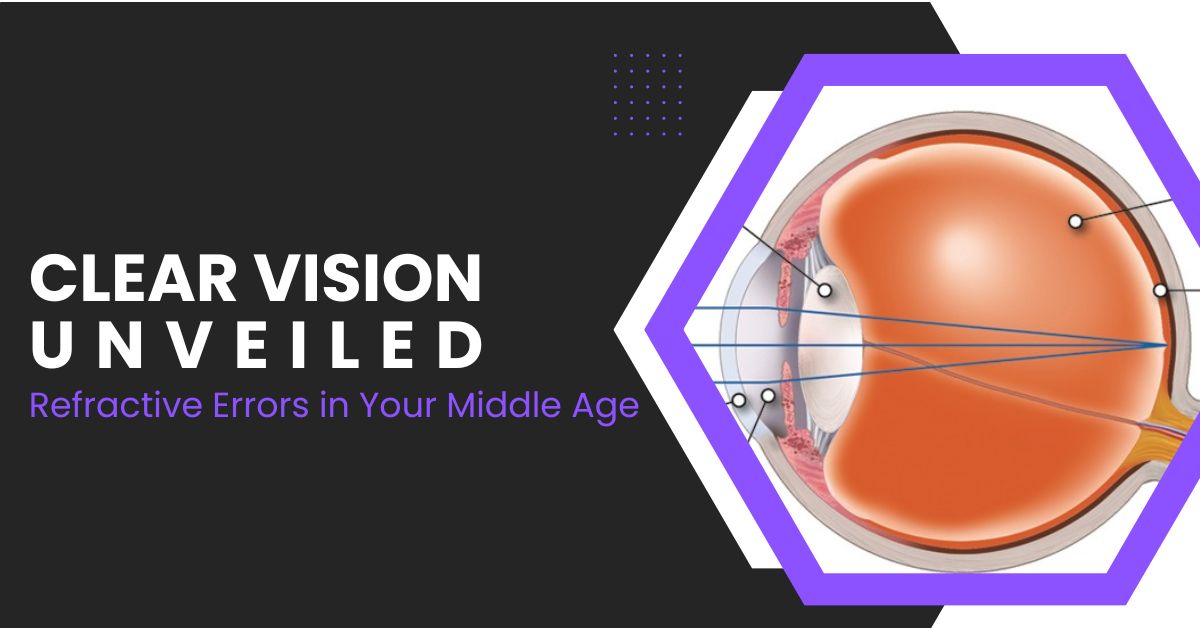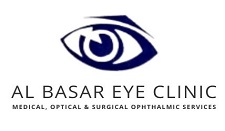
Middle age is a time when many individuals begin to notice changes in their vision. While there is no precise definition, middle age is commonly considered to span from approximately 40 to 60 years old.
These vision changes are often attributed to refractive errors, which can affect the clarity and sharpness of vision. In this blog post, we will explore common refractive errors that occur during middle age, their causes, symptoms, and available solutions. Understanding these conditions can help individuals navigate their vision changes and seek appropriate treatment options to maintain optimal visual acuity.
What are Refractive Errors?
Refractive errors are common vision problems caused by abnormalities in the shape of the eye, preventing light from properly focusing on the retina. The most common types of refractive errors include:
- Nearsightedness (myopia): Difficulty seeing distant objects clearly.
- Farsightedness (hyperopia): Difficulty seeing nearby objects clearly.
- Astigmatism: Blurred or distorted vision due to irregular curvature of the cornea or lens.

Refractive Errors in Middle Age
During middle age, several factors can contribute to changes in vision and the development or progression of refractive errors. These factors include:
- Presbyopia: Around the age of 40, the natural lens of the eye loses flexibility, affecting the ability to focus on nearby objects. This condition is known as presbyopia and often requires reading glasses or other corrective measures.
- Lens Changes: The gradual hardening and yellowing of the lens can impact visual acuity and color perception.
- Astigmatism Progression: In some cases, astigmatism may worsen during middle age due to changes in the shape of the cornea.
Symptoms of Refractive Errors in Middle Age
The following signs and symptoms may indicate the presence of refractive errors during middle age:
- Blurred vision at various distances.
- Difficulty reading or focusing on close-up objects (presbyopia).
- Eyestrain or fatigue after prolonged visual tasks.
- Headaches or eye discomfort.
Solutions for Refractive Errors

Fortunately, there are effective solutions available to correct refractive errors in middle age:
- Eyeglasses: Prescription glasses can compensate for refractive errors and provide clear vision at various distances. Progressive lenses or bifocals are often prescribed for individuals with presbyopia.
- Contact Lenses: Soft or rigid gas-permeable contact lenses are popular options for individuals seeking an alternative to eyeglasses. Multifocal contact lenses can address presbyopia. However, the use of contacts does come with certain risks of adverse events including but not limited to infection, allergy, inflammation and ulcers or abscesses on the cornea which may lead to scarring a further reduction in vision.
- The choice of Intraocular lens power implanted into the eye of a presbyopic person requiring cataract surgery at a certain stage in their life can be made to deliberately make such an individual myopic to give an advantage of the ability to carry out near tasks (including reading) without glasses.
Importance of Regular Eye Exams
Regular eye exams are crucial for diagnosing and monitoring refractive errors during middle age. Eye care professionals can assess vision changes, prescribe appropriate corrective measures, and detect any underlying eye conditions that may contribute to refractive errors.

Lifestyle Tips for Maintaining Good Vision
In addition to corrective measures, adopting healthy habits can promote good vision during middle age:
- Maintain a Balanced Diet: Consume a diet rich in antioxidants, vitamins, and minerals to support overall eye health. Include foods like leafy greens, citrus fruits, and fish.
- Take Frequent Eye Breaks: When engaged in prolonged visual tasks, such as working on a computer, take regular breaks to rest your eyes and reduce strain.
- Protect Your Eyes: Wear sunglasses with UV protection outdoors and use protective eyewear when engaging in activities that could potentially harm your eyes.
Conclusion
As the curtain falls on our journey through the realm of refractive errors in middle age, one thing remains crystal clear: armed with knowledge and empowered by a range of solutions, we can confidently navigate the path to clear vision. So, let us embrace this newfound understanding and embark on a future where sharp sights and vibrant experiences await us at every turn
